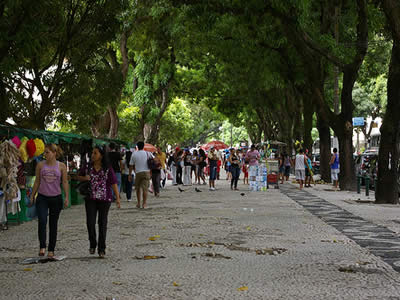The northern city is the biggest fair in Latin America since 1688. Religious, hot and wild, open to tourism in the Amazon River delta.
Photography by Nao Iizuka
Aspects of place:
The streets of Belem form tunnels of mango trees and breathe the scent of jungle. High humidity and heat characterize the state capital of Pará, northeastern Brazil, a city that knew greatness when the rubber boom in the late nineteenth century, became an elementary production center for the world and the most important Amazon, along with the city of Iquitos, Peru.
At the foot of the delta formed when the Amazon River empties into the Atlantic, there, well north of Brazil, is formed Marajó archipelago consisting of more than 3 000 islands. The city, surrounded by canals and the last and slowest branches of the river «mais grande do world», hosts around six environmental parks.
Photography by Jay Woodworth
As the Amazon River, the delta and the whole country, Belem surprised by its size. Gateway to the jungle and located on the line of Ecuador (need yellow fever vaccination before traveling), was fought by the British port, Dutch, French and Portuguese, which is reflected in the eclectic architecture. Is celebrating these days, as more than two hundred years (since 1793) all Octobers, one of the conveners religious festivals of the world: the feast of Nossa Senhora de Círio Nazaré for reaching about 1 million and a half of pilgrims. Until 24, masses, processions, music and exhibitions brighten the streets of this city of more than 2 million inhabitants.
And Brazilian dimensions to continue. The market Ver-o-Peso is the biggest fair in Latin America. Founded in 1688 by the Portuguese sought to control the input tax and output from the Amazon, stood tall over time and today is a journey into the native scents. Fresh fish everywhere, meats, herbs, spices, fruits and vegetables that make it paradise every traveler can appreciate.
The Cidade Velha, the oldest district of the city, dating from the seventeenth century when the Portuguese settled in what is known as the Bay of Guajará. They built the Forte do Castelo, which is visited and which affords a good view of the cement that feels both green intruder. In addition, the Catedral Metropolitana da Sé Igreja do Santo and Alexandre are two architectural treasures should not be overlooked.
Tours of the jungle:
In the heart of the city, is Zoobotánico Park and Museum Emilio Goeldi Parens, a place where jaguars and anacondas are combined with colorful native flora species. In addition, there are spaces dedicated to ancient Amazonian communities, where you can meet and learn about how they lived and lived in an environment where nature seems so impenetrable.
The Mangal das Garcas, just minutes from downtown, preserves ecosystems typical of the area and opens to the public through boating. Again with a good mosquito repellent on the skin, the next day, is ecotourism. After a visit to Rodrigues Alves Forest Botanical Garden, the ride continues to the freshwater beaches and warm waters of Ilha Mosqueiro, an old area of weekend family «rubber trees».
Dense forests, rivers and streams await 15 kilometers from downtown. The Bioparque Amazônia is a summary of the jungle in 22 miles of trails in an area that connects four native ecosystems, where you can see alligators, crocodiles, monkeys, anteaters, macaws, parrots, toucans, Pacarana, the harpy eagle and countless of birds. It also has a museum that holds three thousand pieces of shells and mollusks from all continents.
Photography by Jay Woodworth
Good luck!
Leave a Reply
You must be logged in to post a comment.



Recent Comments